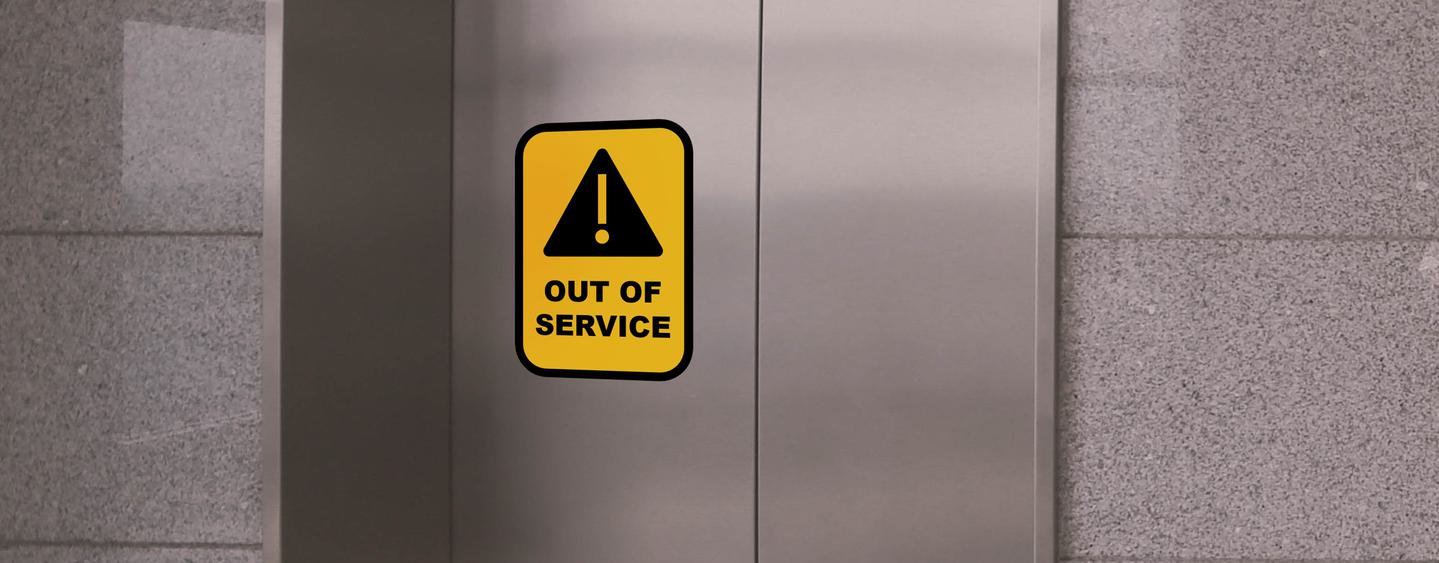The Three Most Common Elevator Problems
You know what they say: an ounce of prevention is worth a pound of cure – and this is particularly relevant when it comes to your elevators. With several electrical and mechanical components working to provide reliable elevator operation, different issues can arise unless time and effort are made to avoid them.
In addition to natural wear from daily use, there are many things that can affect performance problems. Passengers could be forcing the doors open, there could be incidental damage and the elevators may become overused. But the good news is that once you identify the factors that cause your common issues, you’ll be able to help minimize — or even prevent — their occurrences. This goes a long way to keeping your elevators running safely and efficiently.
Let’s look at some of the typical problems that can occur within your elevator system and what you can do to reduce their impact.
Malfunctioning Doors
Doors are a vital part of the elevator for obvious reasons, not least when it comes to safety. However, elevator doors are more complex than most people realize.
Problems with the doors are among the most common reasons for all elevator downtime and repairs, especially in busy buildings like hotels where the doors are in constant operation. Most issues are caused by mechanical malfunction, physical damage or general wear and tear. To mitigate some of this, remind passengers to never prop the doors open for any reason, as this impedes the natural movement the doors were designed for.
Also, make sure there are no obstructions in any of the door tracks. Trash or debris that prevents the door from opening or closing properly can expedite the strain on the door, leading to unplanned repairs. This can be a particular issue during cold winter months, when shoes and luggage can drag in salt and grit from outside.
Power Failure
Power outages are another common elevator problem that can adversely affect the entire system. This is a particular concern if there are passengers on board when a power issue arises.
There are several possible causes of power failures, including anything from a blown fuse to damaged wiring or even a bad storm. While storm damage is unpredictable, the key to identifying and preventing power problems is to be prepared in other ways.
One of the biggest advantages of proactive maintenance is that it allows the technician to identify early signs of trouble in all components — including electrical — and prepare plans for servicing and emergencies before a serious issue develops.
Mechanical Problems
As with all mechanical equipment, problems can occur with the many components of your elevator system. Your technician may mention common parts that need servicing - like the sheaves, motor bearings, or cables. These and other components will be inspected during routine maintenance visits, which will help you plan for repairs or replacement.
What you can do to help take care of the equipment and facilitate maintenance is to make sure that the machine room is always clean, accessible and tidy (just be sure not to touch the equipment inside!) You can also ask your technician to provide an estimated timeline for the servicing or replacement of any components. This will help you to prepare for upgrades over time instead of facing unplanned repairs.
We're here to help
While this is not a comprehensive list, these are three of the most common problem areas that building owners encounter. Having a solid, dependable service partner in place will keep you one step ahead of all these and many other potential issues - no matter how old your equipment may be.
Our friendly team at American Elevator Group consist of non-proprietary elevator specialists, which means we can service, repair and maintain any brand of elevator. When you need a preventive maintenance plan that suits your elevator systems and your building, reach out to our team and we’ll be happy to talk.
Find your local provider
Search our partner listSubscribe
Join our mailing list to get our latest news.

